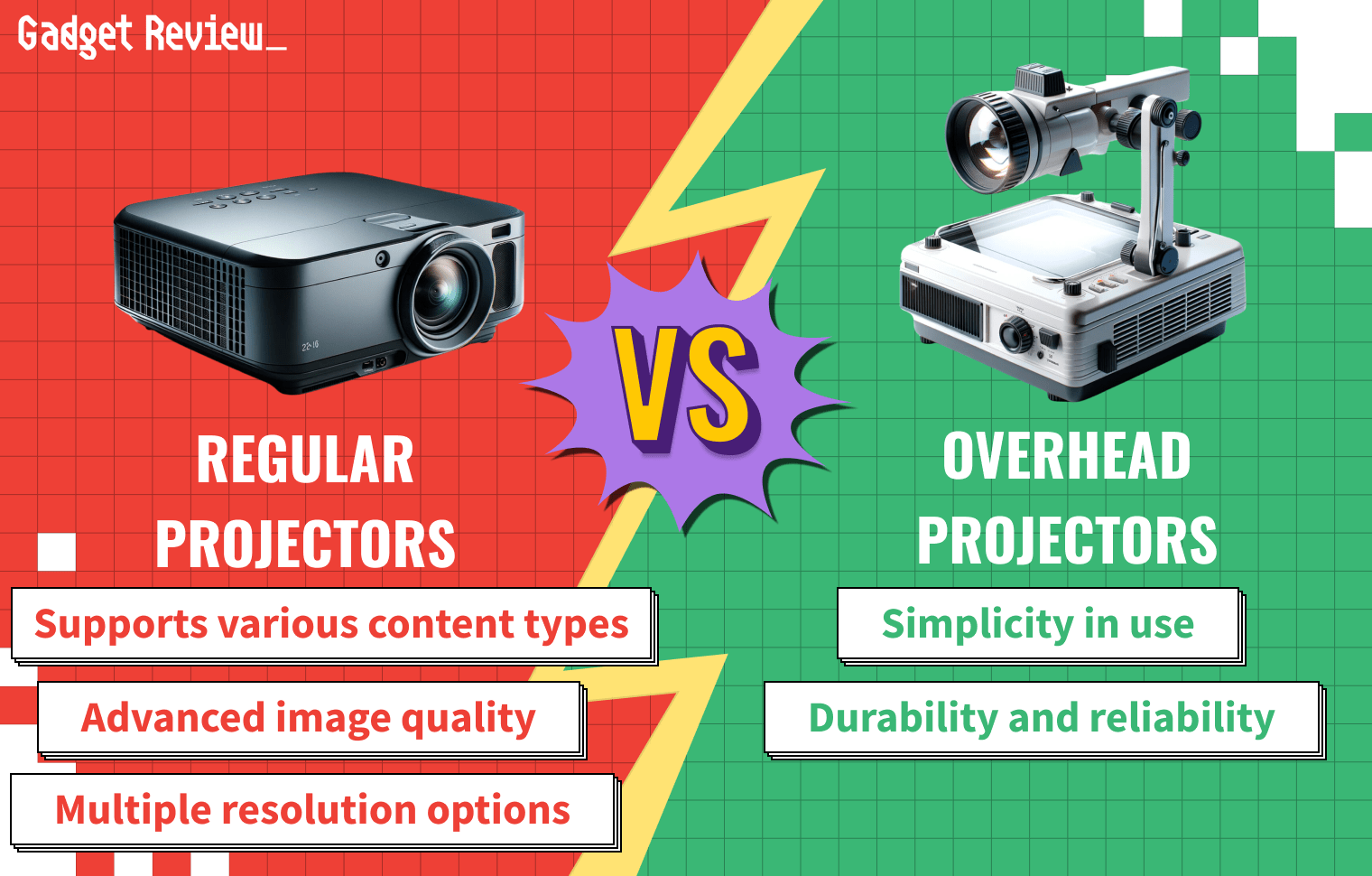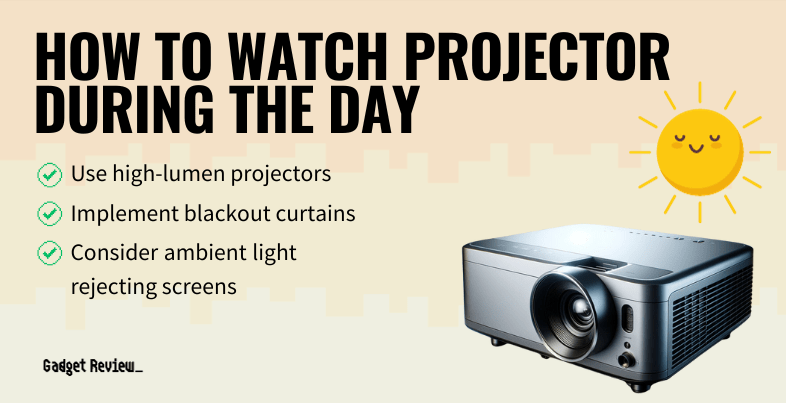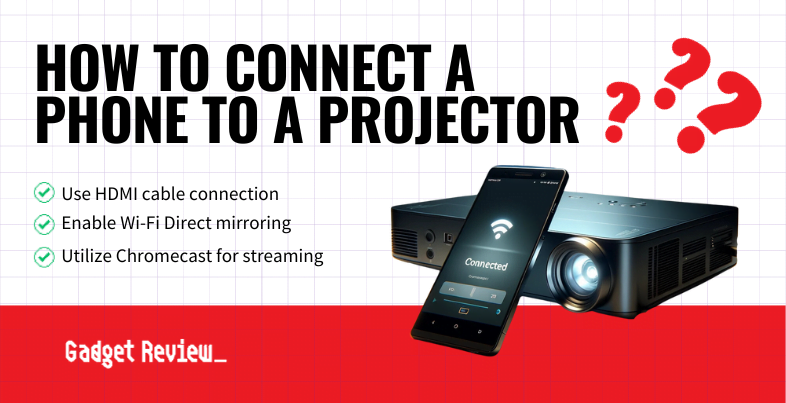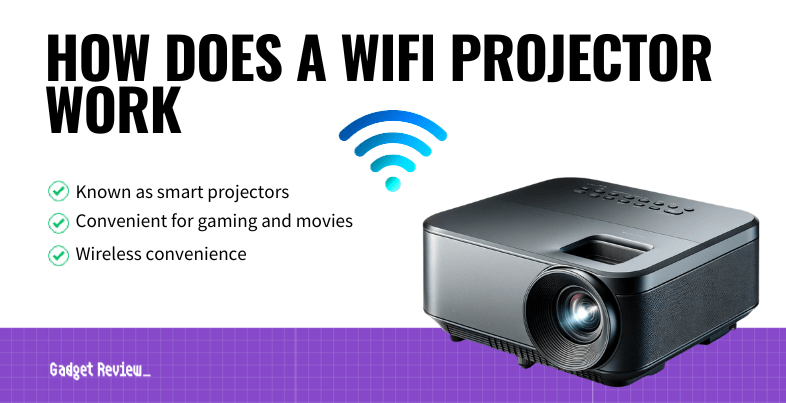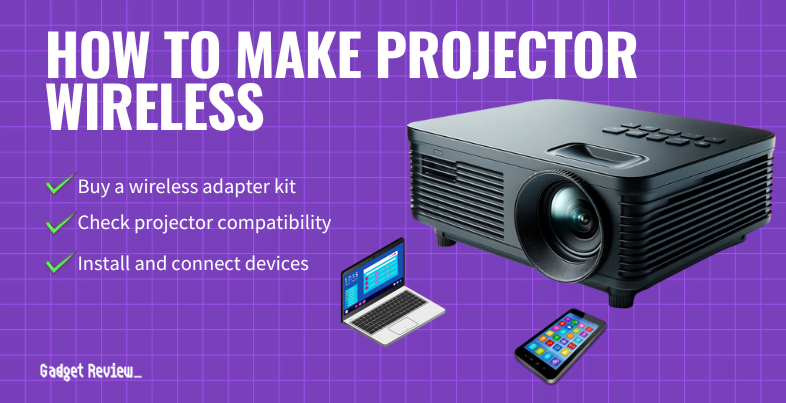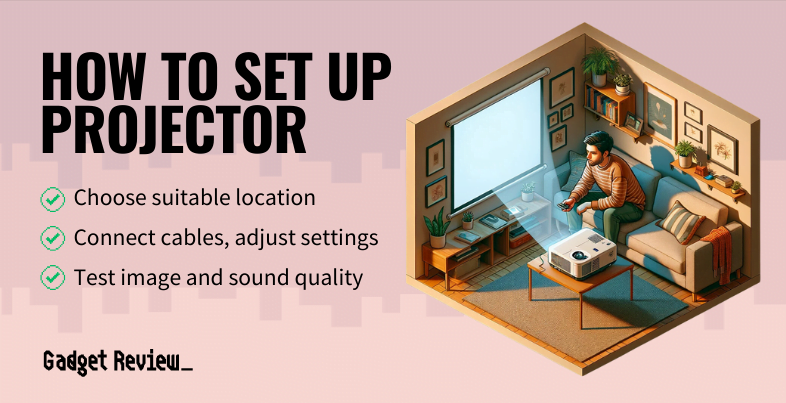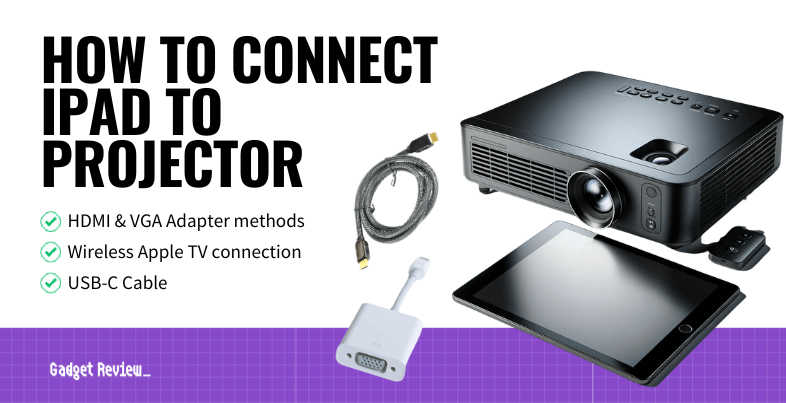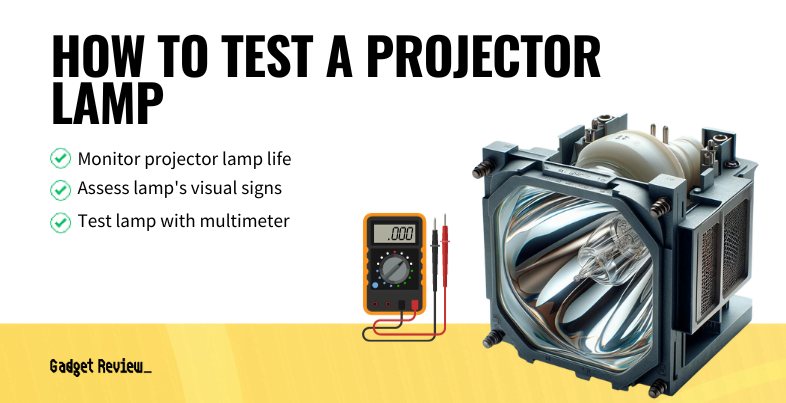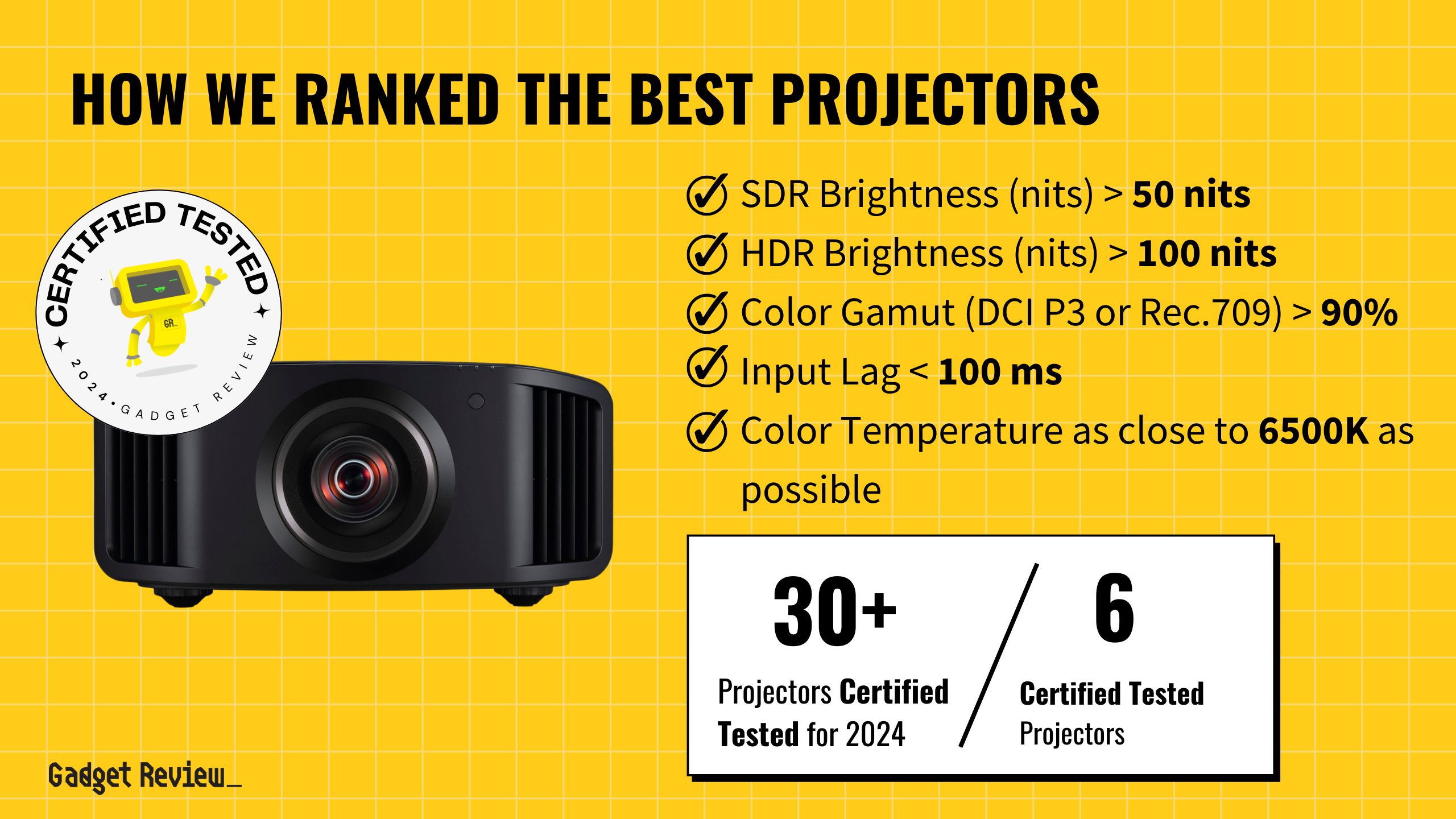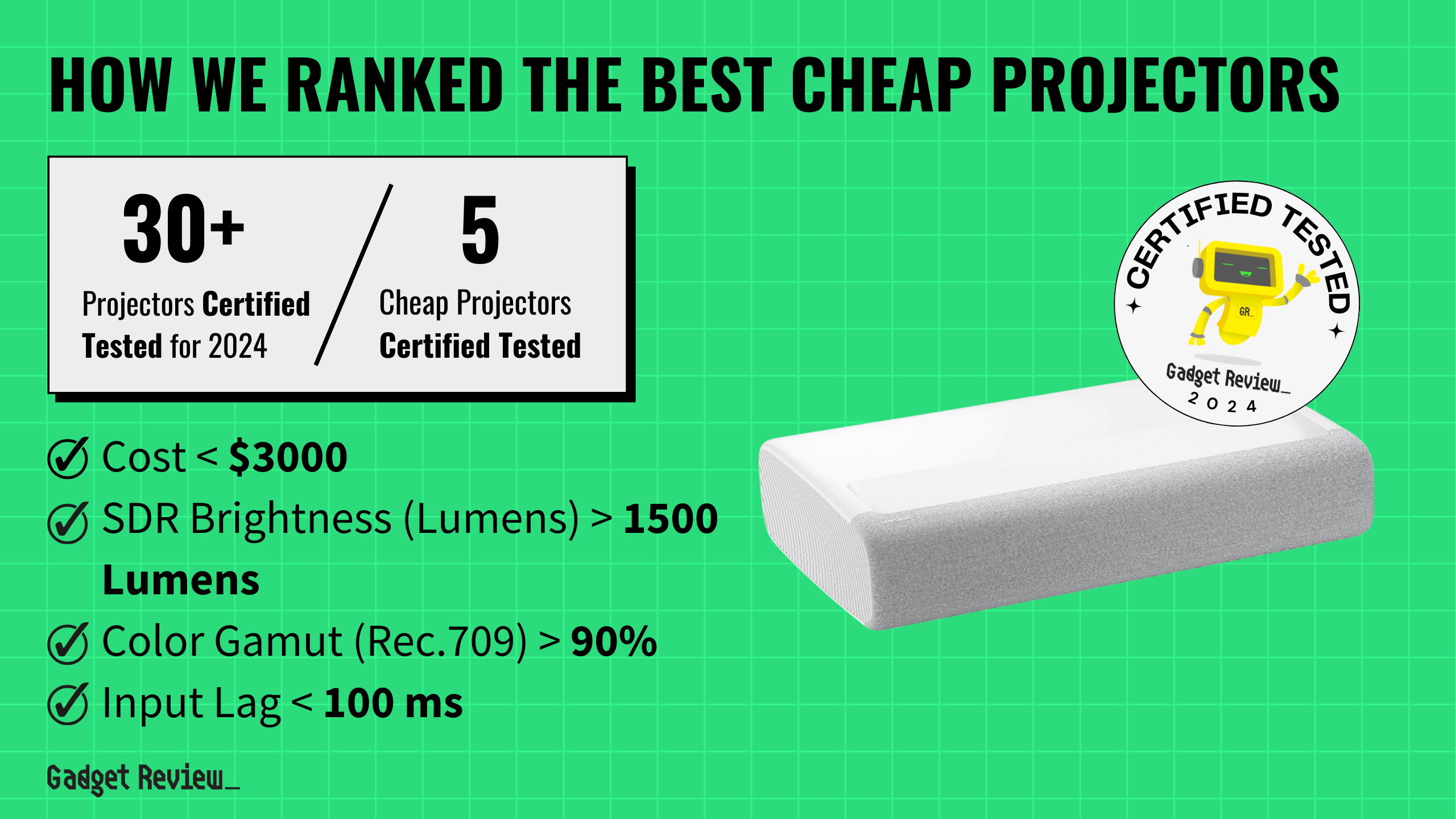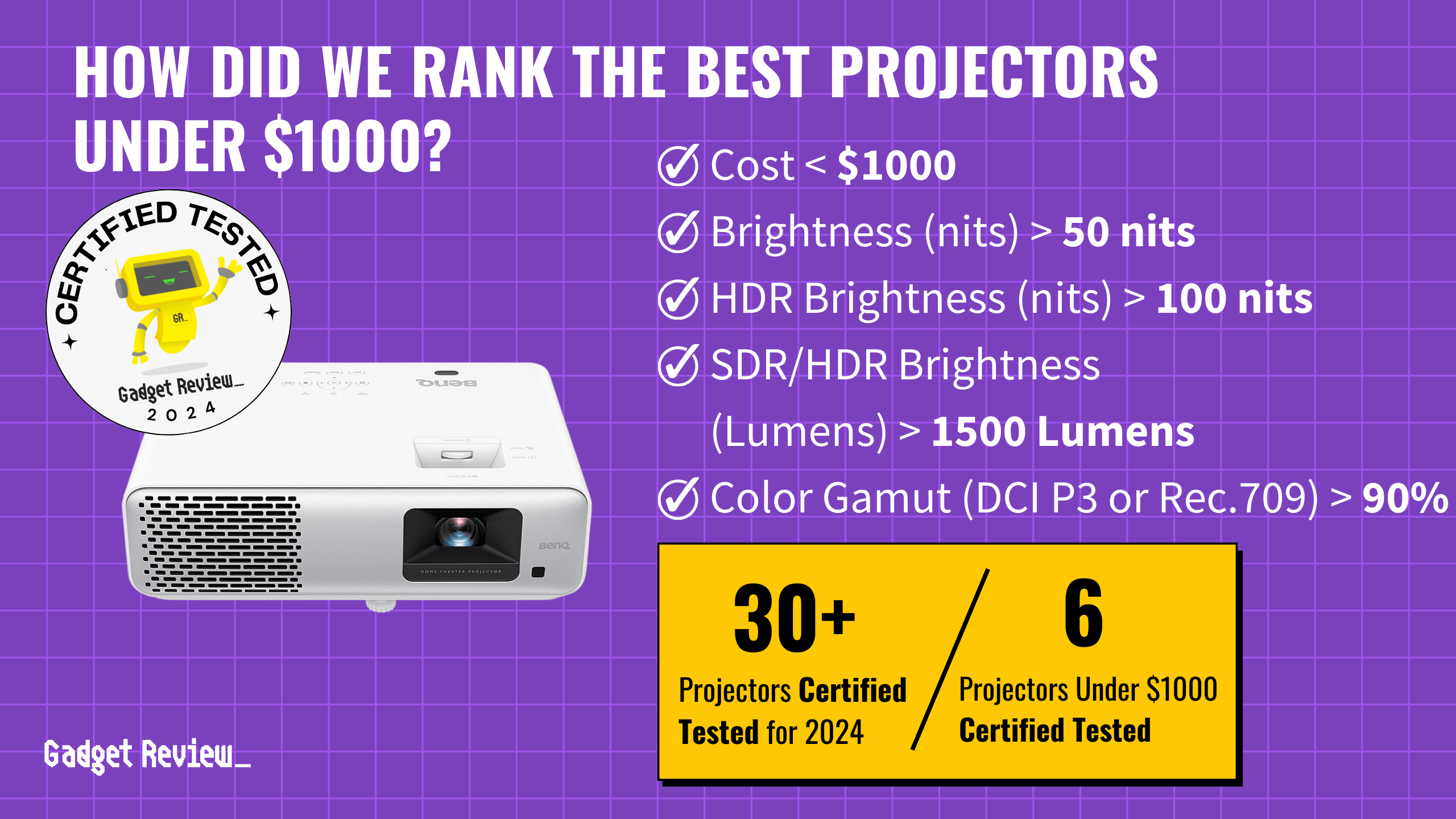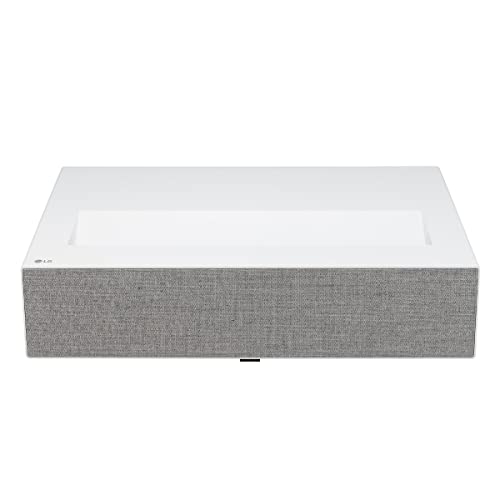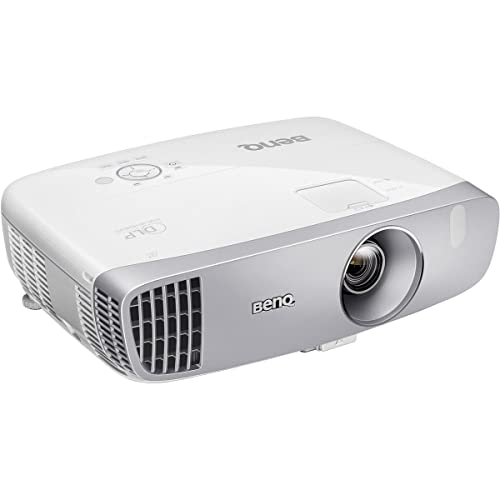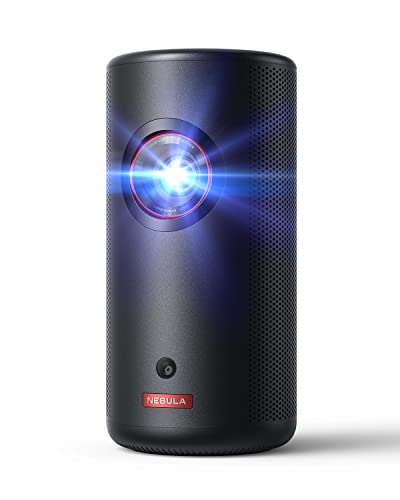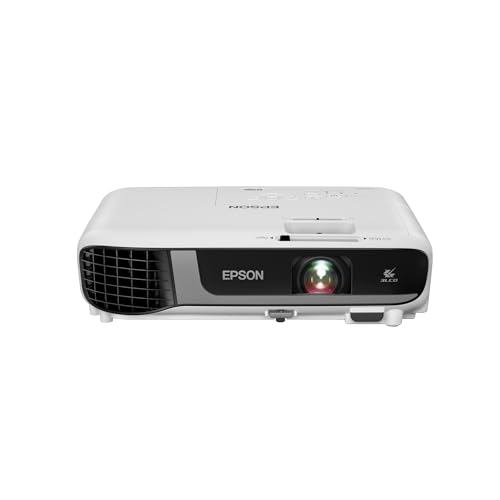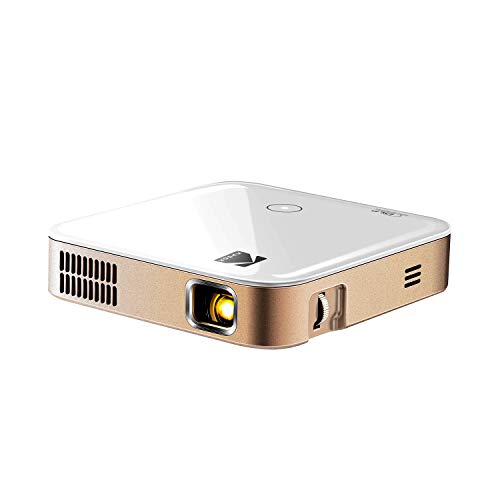As video projectors become lower in price, schools have had to choose between a video projector vs. an overhead projector. Although, you can choose between a video gaming projector vs a home theater one, based on your individual needs. Nearly every aspect of these types of projectors is different, but all projectors use a light source to project enlarged images onto a screen. The light source is different between LED projectors, laser projectors, and lamp projectors. When it comes to finding the best projectors for schools and homes, we’ll have to consider the content available for both of these projection methods. To better understand digital devices, you may want to check out projector: native resolution vs. supported resolution.
Key Takeaways_
- Overhead projectors are used mainly in businesses and schools that have the transparencies and projectors already.
- Many video projectors have become common in businesses, schools, and homes.
- Video projectors can be used with a variety of content, not just transparencies, as overhead models can.
Differences Between Video and Overhead Projectors
The differences between video and overhead projectors vary from the type of content that can be shown to the method of projection. Additionally, the two may be used in different settings and with differing ambient light and brightness. When it comes to most of these differences, video projectors seem like the better choice, but overhead models have been used for years in education, making them worthwhile to schools and teachers who have their teaching already printed and organized on the overhead.
insider tip
Video projectors show images and videos that are hooked up to the device, and changes can be made on this device while in use.
So, you wouldn’t need to ask, “can I write on a projector screen” with an overhead projector, as teachers have been going that for years. Continue reading to find out more about these two projection technologies.
Available Content for Overhead and Video Projectors
The largest difference between video and overhead models stems from the type of content that can be displayed from either. Education facilities and businesses use overheads to show information from a transparent slide with printed or drawn content, including text, photos, or slides. This particular type of device only works with these types of materials.
insider tip
Overhead projectors have become less common purchases, but schools that already have the desired slides still use them due to their ease of use and cleaning.
Meanwhile, a video projector can show stationary pictures or videos to the watcher, as the name suggests. Thus, a video projector expands the content that can be shown, especially with the use of internet capabilities or document cameras, which makes it ideal for getting the projector for your living room or classroom.
Projection Methods for Overhead Projectors and Video Projectors
Overhead devices include a light source under the transparent paper’s plate. The light then shines up through the plate before hitting a mirror and bouncing off, showing the projected picture on the desired wall or board. For video projection, the light source bounces off of a digital micromirror device or passes through a liquid crystal display (LCD) system.
warning
Many games are not available in 4K, so you may want to stick with a cheaper 1080p option, which still features full HD.
After being altered by color filters (for a digital light processing device) or the displays (for LCD projectors,) the image projects through the lens onto the projection screen. Several resolutions are possible using a video model, including WXGA resolution vs. full HD for a projector.
Usage for Overhead and Digital Projectors
Overhead models may be used at businesses or in schools to demonstrate processes or provide information. The transparent pages can be written on using a dry-erase marker that can be washed or erased at the end of the meeting or lesson.
STAT: Overhead projectors were widely used in education and business before the advent of video projectors. (source)
Digital versions can be used in the same settings or at home for entertainment. Although they do not offer the interactivity of markup using a whiteboard marker, they can be altered and adjusted on the computer or other source device. Additionally, digital projectors support larger images and sharp images.
Brightness and Contrast Ratios for Overhead and Digital Projectors
The brightness of both of these devices rests at an average of about 2,000 lumens. There are brighter images and outputs available for each, but digital projector technology is less affected by ambient light and does not waste light like an overhead model. Additionally, the picture quality and contrast ratios typically remain better on a video projector due to the fact that they have more pixels overall, greater screen size, and brighter white levels when showing photos. Overhead models show photos with only the image quality available when printing.

